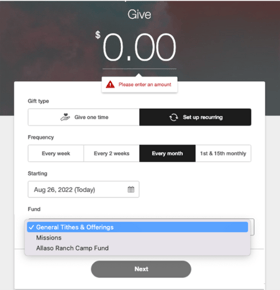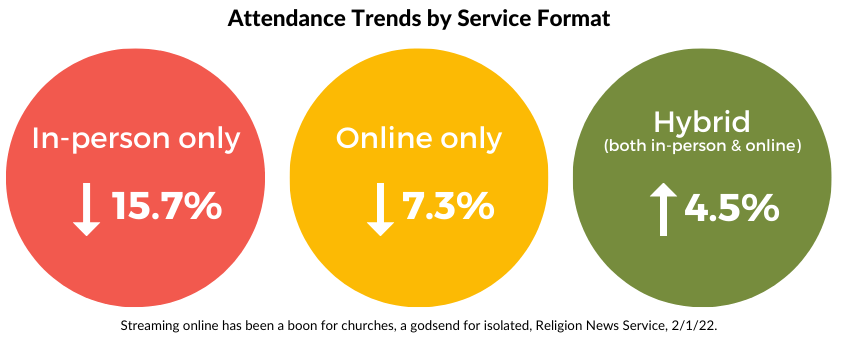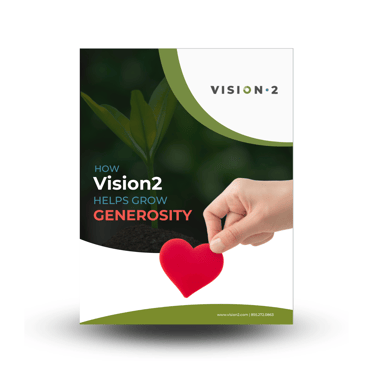Encourage Generosity by Activating Empathy
Generosity is as natural as selfishness. You’ve probably seen toddlers exhibit both in the same minute. On the other hand, generosity is also learned.

How to increase generosity in your church’s givers is a complex matter in today’s culture, a result of many factors.
At its heart, generosity is a spiritual issue that must be addressed, along with the mental, emotional and physical barriers that war against it. Generosity can't be forced, but you can create an environment that allows it to flourish naturally.
Unfortunately, there's no 'silver bullet' for increasing generosity. But scripture, wisdom, data, and new findings about the psychology of giving can help us holistically address today's disturbing giving trends.
Generosity and trust are inside jobs. Liberal giving always comes out of a sense of abundance and gratitude, not out of scarcity and fear. As the widow’s mite story in Luke 21 illustrates, this mindset may have nothing to do with the actual resources available. Rather, it’s about a giver’s trust in God and His unlimited resources and love, along with givers’ trust in their church.
It’s a tall order: Help people understand that God is not on a budget - financially or otherwise! Cast a vision of the abundant life God wants for them and the blessings that come from growing in the discipline of giving.
From a practical perspective, connect gratitude and trust in a simple program like Central Church’s Generosity Rockstar, which helps givers incrementally develop their giving “muscles."
 When people feel valued, accepted and connected, they naturally become more committed to the environment that provides these things for them. By fostering genuine relationships within your church, individuals become more invested in its success and more likely to support it financially.
When people feel valued, accepted and connected, they naturally become more committed to the environment that provides these things for them. By fostering genuine relationships within your church, individuals become more invested in its success and more likely to support it financially.
To achieve this powerful effect:
This level of engagement is so rare at most churches that people will definitely notice and feel the difference.
Studies show a direct correlation between debt and lack of tithing. Many of your givers may feel unable to give consistently. Conversely, financial stability makes them more likely to contribute financially.
Offer workshops or classes to teach members how to manage their finances wisely. Providing resources such as budgeting tools, tax assistance, or counselors can help your members gain control over their personal finances and free up funds for giving back to your church community.
Generosity, in general, is on the rise but has, for the first time, decreased for religious organizations in 2023 (Giving USA 2023 Report). Givers are choosing faith-based organizations over the church.

Many factors influence this trend, including the overall decline of church attendance. But for the givers you have, giving motivations play a hidden role in their generosity.
The Old Testament obligatory, sliding-scale tithing system was non-negotiable, even for the poor: Just give what is due. Today, givers no longer give out of a sense of obligation or responsibility.
 But for some reason, the typical giving form reflects the obligation attitude. The dollar amount is the primary focus. Not your church. Not your ministries. Not givers' hearts, ability, sense of worship, or areas of passion. Their gift amount is the leading factor.
But for some reason, the typical giving form reflects the obligation attitude. The dollar amount is the primary focus. Not your church. Not your ministries. Not givers' hearts, ability, sense of worship, or areas of passion. Their gift amount is the leading factor.
 But what if a giving page or giving form instead reflected the way today’s consumers shop, donate, and make reservations, with images and dynamic descriptions of ministry funds to browse, search through, learn more about and give to?
But what if a giving page or giving form instead reflected the way today’s consumers shop, donate, and make reservations, with images and dynamic descriptions of ministry funds to browse, search through, learn more about and give to?
What if the primary focus was ministry? And not just financial support but also participation in prayer and volunteering.
This kind of engagement inspires greater giving.
Seek to understand today’s giving motivations and abilities. The state of the economy and the values of younger generations are your realities. Younger churchgoers see volunteering as equal to financial giving. They prize being recognized. And they greatly desire to have an impact on the world. For all age groups, not knowing how their gifts are having an impact is the #1 reason they don’t give.
So demonstrate the impact of their gifts, even (or especially) with your General Fund.
View a Vision2 client's giving page.
First, it’s important to know the difference in stewardship and generosity and address them separately. (Christian Stewardship Network's President Leo Sabo puts it this way: “Generosity is about what you give, stewardship is about what you keep.”)
Stewardship education should be an ongoing process within the church. Regularly engaging in generosity conversations through sermons, small group discussions, or dedicated stewardship programs helps members develop a biblical understanding of stewardship and generosity…
If it’s done right, that is!
If the motive is simply to increase giving, your efforts will be perceived as the church always harping on money. Instead, indicate that stewardship and generosity are not...
“what the church wants FROM people, but what it wants FOR people,”
...as our friends at Central Church put it. If the word stewardship doesn't instill interest, call it something else, like A Blessed Financial Life. Your motive and your method matter.
Following a strategic stewardship plan with resources, testimonies, and practical guidance (beyond just finances), in conjunction with biblical financial literacy, can inspire and equip individuals to embrace a lifestyle of biblical financial and resource management.
Think your church can't afford a stewardship pastor?
When it comes to giving, the check-writing generation may genuinely fail to see or understand the barriers to giving that tech-savvy churchgoers experience. But these obstacles do impact generosity.
So offer various giving options, such as online platforms, mobile apps, text-to-give, along with traditional methods like envelopes or checks, so people can choose the method that suits them best. Convenient, secure online giving options really do make a difference for those who will not give any other way. Also note that not all online giving platforms are created equal, especially when it comes to demonstrating impact.
What about live streaming? Engaging with those who may never step foot in your building (due to location, health or preference) through online opportunities is a form of seed-planting that falls under the principle of planting, watering, and trusting God with the increase. (1 Cor. 3:6)
Now that we have three years of post-pandemic metrics around live streaming, we know that ~52% of Millennial and Gen X church members choose to attend online or a hybrid of online/in-person. (Source)
And churches that offer both in-person and online services are faring the best:

Note: Nurturing digital-first attendees can also reap a harvest of financial generosity from those who are benefiting from your efforts.

This is far more important than you may realize. A hallmark of younger givers is their desire to be appreciated. A generic, automated thank-you email from your third-party giving provider wastes a golden opportunity to further connect with your donors.
Here’s how most third-party giving platforms treat your givers after the gift -- and how it can be more effectively done.
Today's givers are generally suspicious of how institutions spend their money. Many have a growing disdain for funding operational expenses, due to the lack of disclosure. So churches should establish transparent financial practices and provide regular updates on how funds are allocated and utilized. This helps build trust and confidence among members, assuring them that their contributions are handled with integrity.
To ensure the succession of generosity within the church, you must engage younger generations! One exciting trend is that Millennials are returning to the church, but they still have preferences and expectations.
Foster a sense of ownership and encourage their active participation in giving and leading by:The British physicist and mathematician William Thomson Kelvin said “What is not defined cannot be measured. What is not measured, cannot be improved. What is not improved, is always degrading.”
Stay relevant and adapt your strategies by:
Regularly evaluate these specific metrics in your stewardship and generosity initiatives to assess their effectiveness, make necessary adjustments and learn how to use your data to best minister to givers.

It seems simple but it does get overlooked. In a study referenced in Psychology Today, 85% of respondents said the reason they gave was simply because someone asked them. When leaders clearly and confidently communicate the financial needs of the church, along with the vision and mission, individuals are prompted to respond.
How to Overcome Your Discomfort With Talking About Giving
 Get OUR Free eBook to LEARN HOW VISION2 HELPS GROW Generosity
Get OUR Free eBook to LEARN HOW VISION2 HELPS GROW GenerosityFew giving platforms contain features that proactively help grow generosity. But Vision2's giving experience was created to overcome the 5 top reasons for gift abandonment found in most other systems.
Download today or reach out to us with your questions.

Generosity is as natural as selfishness. You’ve probably seen toddlers exhibit both in the same minute. On the other hand, generosity is also learned.

Most conversations about online giving for churches start with how to motivate generosity in church members and attendees.At Vision2, ours starts...

We’ve recently been discussing the difference between stewardship and generosity. In a nutshell: